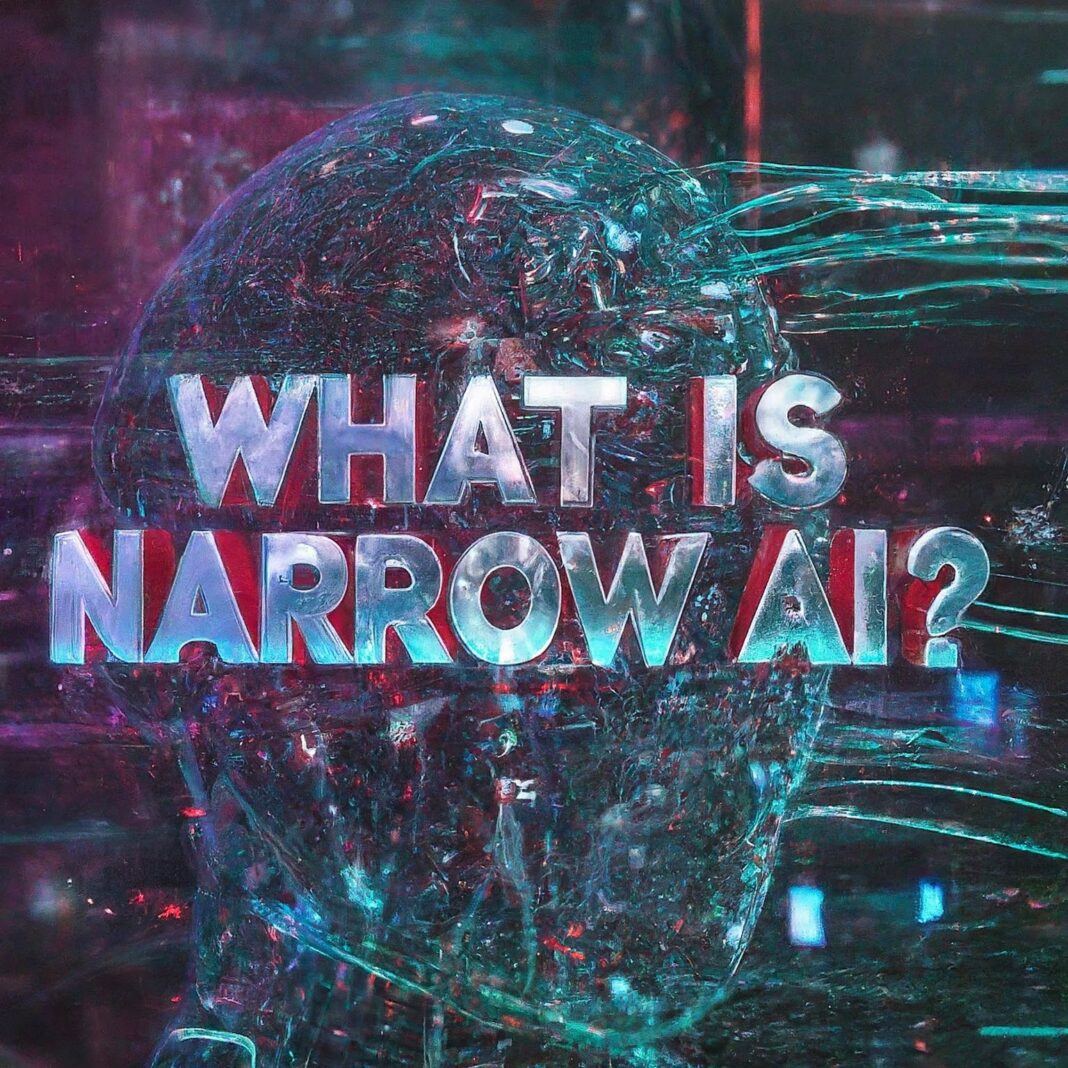Understanding Narrow AI (Weak AI): Applications, Advantages, and Limitations
In the realm of artificial intelligence (AI), Narrow AI, also known as Weak AI, plays a crucial role in various applications across industries. In this comprehensive guide, we’ll explore what Narrow AI is, its applications, advantages, limitations, and its significance in the broader landscape of AI development.
1What is Narrow AI (Weak AI)?

Narrow Artificial Intelligence refers to AI systems that are designed and trained for specific tasks within a limited domain. Unlike General AI, which aims to emulate human intelligence across a wide range of tasks, Narrow Artificial Intelligence focuses on excelling in a particular area of expertise. These systems are proficient at performing predefined functions but lack the general intelligence and adaptability of humans.
Table of Contents
2Applications of Narrow AI
Narrow Artificial intelligence finds extensive applications across numerous industries, including:
- Virtual Assistants: Virtual assistants like Siri, Alexa, and Google Assistant utilize Narrow Artificial intelligence to understand and respond to user queries, manage calendars, and perform tasks such as setting reminders and sending messages.
- Recommendation Systems: Online platforms use Narrow Artificial Intelligence algorithms to analyze user preferences and behavior, enabling personalized recommendations for products, movies, music, and content.
- Medical Diagnosis: Narrow Artificial Intelligence algorithms analyze medical data such as diagnostic images, patient records, and genomic information to assist healthcare professionals in diagnosing diseases, identifying treatment options, and predicting outcomes.
- Finance: In the financial sector, Narrow Artificial intelligence is employed for tasks such as fraud detection, algorithmic trading, credit scoring, and customer service through chatbots.
- Autonomous Vehicles: Self-driving cars utilize Narrow Artificial intelligence to interpret sensor data, recognize objects, and make real-time decisions to navigate safely and efficiently on roads.
3Advantages of Narrow AI
- Specialized Expertise: Narrow Artificial intelligence systems are tailored to excel in specific tasks, allowing them to achieve high levels of performance and accuracy within their designated domains.
- Efficiency: By automating repetitive tasks and streamlining processes, Narrow Artificial Intelligence enhances efficiency, productivity, and cost-effectiveness across various industries.
- Personalization: Through the analysis of vast amounts of data, Narrow Artificial intelligence enables personalized experiences and recommendations tailored to individual preferences and needs.
4Limitations of Narrow AI
- Limited Scope: Narrow Artificial intelligence is constrained to specific tasks or domains and lacks the ability to generalize knowledge or adapt to unfamiliar situations outside of its programming.
- Data Dependency: The performance of Narrow Artificial intelligence systems heavily relies on the quality and quantity of training data available. Biased or incomplete data can lead to inaccurate or unreliable outcomes.
- Lack of Understanding: Despite their proficiency in performing tasks, Narrow Artificial intelligence systems lack true understanding or consciousness and operate based on predefined algorithms without genuine comprehension.
5The Significance of Narrow AI in AI Development
Weak AI serves as a foundational building block in the development of more advanced AI systems. By focusing on specific tasks and domains, Weak AI enables researchers and engineers to make significant advancements in machine learning, natural language processing, computer vision, and other AI disciplines.
6What’s Good in Narrow AI:
- Specialized Expertise: Narrow AI systems are tailored to excel in specific tasks within a limited domain, achieving high levels of performance and accuracy.
- Efficiency: By automating repetitive tasks and streamlining processes, Narrow AI enhances efficiency, productivity, and cost-effectiveness across various industries.
- Personalization: Through the analysis of vast amounts of data, Narrow AI enables personalized experiences and recommendations tailored to individual preferences and needs.
7What’s Bad in Narrow AI:
- Limited Scope: Narrow Artificial intelligence is constrained to specific tasks or domains and lacks the ability to generalize knowledge or adapt to unfamiliar situations outside of its programming.
- Data Dependency: The performance of Narrow Artificial intelligence systems heavily relies on the quality and quantity of training data available. Biased or incomplete data can lead to inaccurate or unreliable outcomes.
- Lack of Understanding: Despite their proficiency in performing tasks, Narrow Artificial intelligence systems lack true understanding or consciousness and operate based on predefined algorithms without genuine comprehension.
8Conclusion
Narrow AI, or Weak AI, plays a vital role in various applications across industries, providing specialized expertise, efficiency, and personalization. While it offers numerous advantages, it also has limitations, including its narrow scope and dependence on data. Nonetheless, Narrow AI serves as a critical component in the broader landscape of AI development, paving the way for future innovations and advancements.
Frequently Asked Questions
9What are the advantages of Narrow AI?
Narrow Artificial intelligence offers several advantages, including specialized expertise, efficiency in automating tasks, and personalization through data analysis. These systems excel in specific tasks, enhance productivity, and provide personalized experiences tailored to individual preferences and needs.
10What are some examples of Narrow AI applications?
Narrow Artificial intelligence finds extensive applications across various industries. Examples include virtual assistants like Siri and Alexa, recommendation systems used by online platforms, medical diagnosis tools analyzing diagnostic images, fraud detection algorithms in finance, and self-driving cars interpreting sensor data.
11What are the limitations of Narrow AI?
Despite its advantages, Narrow Artificial intelligence has limitations. It operates within a limited scope, lacks generalization beyond its training data, and is dependent on the quality and quantity of data available. Additionally, Narrow Artificial intelligence lacks true understanding or consciousness and operates based on predefined algorithms.
12How does Narrow AI contribute to the broader landscape of AI development?
Narrow Artificial intelligence serves as a foundational building block in the development of more advanced AI systems. By focusing on specific tasks and domains, Narrow Artificial intelligence enables researchers and engineers to make significant advancements in machine learning, natural language processing, computer vision, and other AI disciplines, paving the way for future innovations.









